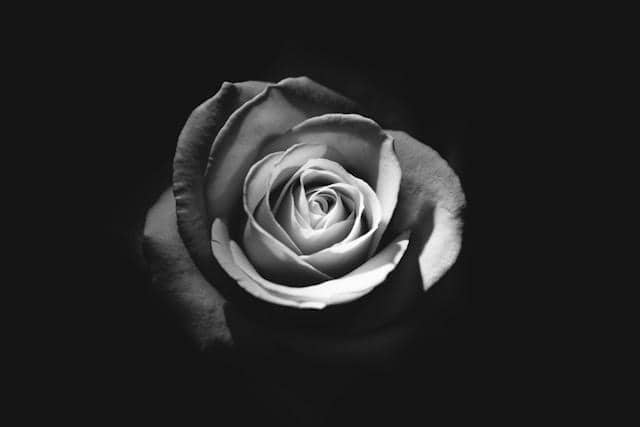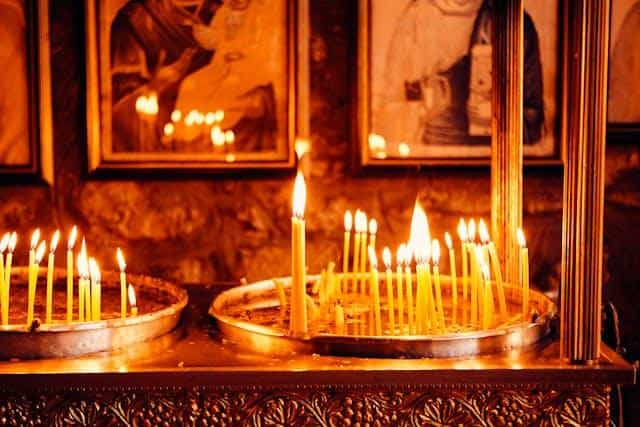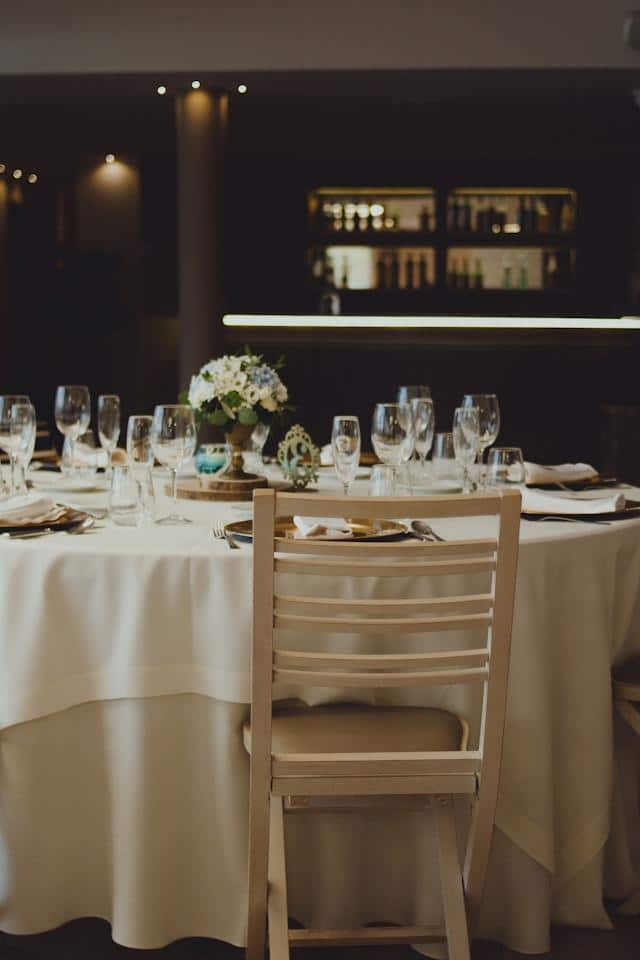Join our live online group lessons starting September 1! Sign up until August 22 here.
Days
Hours
Minutes
Join our live online group lessons starting September 1! Sign up until August 22 here.

What do candles, wheat, and flowers have in common? They are all a part of Serbian funeral traditions.
Although the topic is grim, the funerary customs and beliefs offer a unique window into Serbian culture. So if you’ve ever wondered how Serbs say their final goodbyes, keep reading.
We’ve already covered the joyful side of Serbian traditions — weddings, birthdays, Christmas, and Easter. Now it’s time to look at a more somber, but equally meaningful part of life: the funeral (sahrana).
Since death is part of the deal for all of us, it’s good to know what to expect — whether you’re attending a funeral or just curious about how Serbs mark the end of a life.
Of course, customs vary from one region to another. A funeral in Vojvodina might not look quite the same as one in southern Serbia.
So, to keep things simple, we’ll focus on the most common Serbian funeral traditions and walk you through what usually happens when someone passes away.
When someone passes away, word spreads fast. The family usually informs close relatives and friends first, and from there, the sad news tends to travel on its own.
You’ll also see an obituary (čitulja) — not just in the local newspaper, but often posted on the gate or front door of the deceased’s home.
If you knew the person, it’s common to visit the family to offer your condolences. Not sure what to say? A simple saučešće (condolences) works, or if you want to sound more heartfelt, try primite moje iskreno saučešće (please accept my sincere condolences).
As a guest, you’ll likely be offered a small cup of coffee or rakija by family members or helpful neighbors. Just don’t linger too long — others will want to pay their respects too.
Bdenje (vigil) is a common tradition when someone dies. Namely, someone stays awake watching over the body of the deceased throughout the night.
The idea is to keep the space calm and undisturbed — no animals, not even a stray cat or buzzing fly, should come near the body. According to tradition, this helps the soul find peace on its journey to the afterlife.
Most Serbian folks observe Orthodox Christian traditions, even those who aren’t particularly religious. Of course, people from other faiths will observe different customs, but we’re only talking about the typical Serbian funeral.
So, the first part of the ceremony is the funeral service — opelo. Typically, family, friends, and acquaintances gather at the home of the deceased or the graveyard chapel.
Each attendee approaches the grieving family, offering condolences once more. Then, they approach the coffin to say the final farewell. If you brought any flowers or candles, you can place them at the designated spot at this time.
Although this is less and less common, you may still encounter an open coffin in some regions of the country. Most of the time, though, the casket is shut.
When everyone gathers, some family members or relatives may say a few words about their loved one — a deeply emotional moment that often brings tears even to those who thought they’d hold it together.
Then the priest begins the prayers, chanting for the soul of the departed, while attendees stand in silence, each holding a lit candle — a symbol of Christ’s light guiding the soul to the afterlife.
When the service ends, the casket is carried to the burial site, with everyone following behind.

If the burial site is far from where the service takes place, the procession can take some time. The priest leads, while closest family members bring a cross, a picture of the deceased, and flowers. Next is the coffin, followed by everyone else.
In many parts of Serbia — especially in villages and smaller towns — the procession stops at every crossroads. At each one, the priest chants a short prayer before continuing. The idea behind this tradition is to guide the soul on its journey and make sure it doesn’t get lost along the way.
Once everyone arrives at the cemetery (groblje), it’s time to lay the deceased to rest.
To ensure their loved one is comfortable in the afterlife, families often bury them with personal items — clothes, a blanket, hygiene supplies, and a few of their favorite things.
As the casket is lowered into the ground, the priest continues chanting prayers, while family members toss in flowers and the first handfuls of soil.
And then — believe it or not — it’s time to eat.
You may find this custom bizarre, but no major event in Serbia goes without food and drinks — not even funerals.
Anyway, the food is served over the grave (grob), and everyone should have at least a bite for the sake of the departed.
The most important food is panaija — wheat with sugar and red wine. It’s a symbol of resurrection and eternal life.
Besides that, there’s often a whole spread to honor the person who passed.
And of course, there’s rakija. But here, you don’t clink glasses. Instead, you pour a bit on the ground and say neka mu je laka zemlja (for a man) or neka joj je laka zemlja (for a woman) — may they rest in peace.
After the burial, it’s common for guests to share another meal at the family’s home or in a local restaurant. This ritual is called daća, and it serves as a time to talk, remember, and honor the one who’s passed.
But the customs don’t end there. The family and close friends will gather at the graveyard again for a ceremony in these intervals — 7 days, 40 days, half a year, and a full year following the funeral.
Of these, the first 40 days are considered the most important. According to tradition, the soul wanders the earthly world during this time. On the 40th day, it moves on to heaven.
Meanwhile, the family typically wears black and avoids music and celebrations. It’s a quiet time of mourning, reflection, and adjustment.
Of course, that’s not all. After the first year, the memory stays alive through Zadušnice. This religious holiday occurs four times a year (always on Saturday), and it’s all about those who are no longer among us. On those days, families visit cemeteries to light candles, share food, and remember lost loved ones.

And that’s about it for Serbian funeral traditions. It’s not the cheeriest topic, sure — but there’s no life without death, and no topic is off-limits when you’re learning about Serbian culture and language.
Speaking of the latter, if you’re ready to go beyond grammar drills and dive into real-life Serbian, rituals, slang, songs, and all, check out our Serbian online lessons. You won’t just learn the language — you’ll get to know the world behind it.